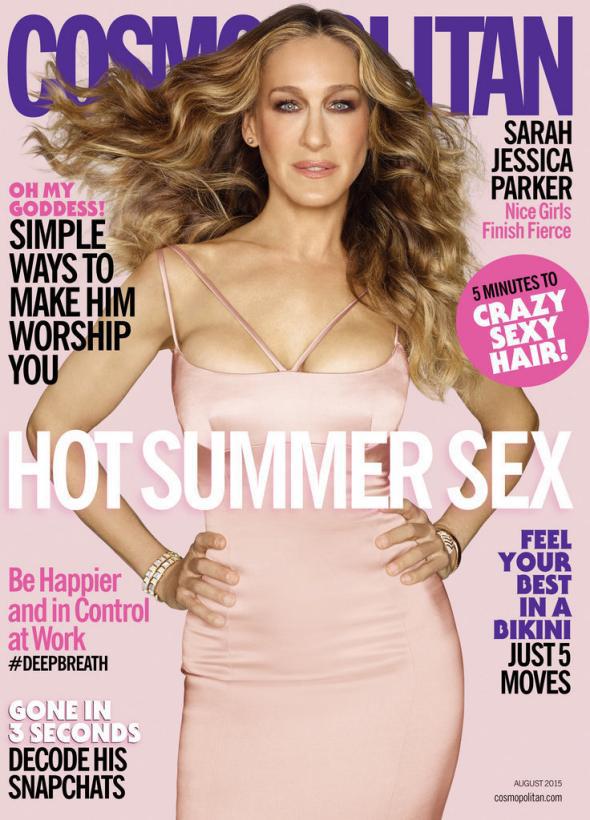You can spot a Cosmopolitan from a mile away: A shiny-legged lady in a playfully provocative pose, typography that runs the gamut from pink to purple, and lots of libidinous mad libs (e.g., “__ Sex Positions to __ His __ Wild!”). For teen girls, Cosmo reads like an instruction manual for their glamorous future selves. For more mature women, it’s dessert in magazine form.
But for the National Center on Sexual Exploitation (NCSE), formerly known as Morality in Media, Cosmopolitan is porn. The NCSE is behind a successful push—hardly the first of its kind—to place the magazine behind blinders in stores owned by two major chains, RiteAid and Delhaize America (which owns Hannaford Stores and Food Lion).
Victoria Hearst, granddaughter of William Randolph Hearst (who founded Cosmo publisher Hearst Corporation), writes in the NCSE press release that the stores’ decision will “protect underage children from being exposed to the magazine’s sexually explicit covers showing scantily clad female celebrities and article titles with the words ‘sex’ and ‘orgasm’!” Hearst hopes the stores will either stop selling Cosmo entirely or forbid the magazine’s sale to anyone under 18.
There are plenty of problems with Cosmo—like most women’s magazines, it still struggles with race and body image. (Try to count the number of non-skinny girls it’s considered sexy enough to grace its cover.) But its covers are not even as sexually explicit as commercials regularly used to promote a greasy burger chain. No child has ever been harmed by a lady pushing her boobs together behind a sexy word cloud.
But hark: The NCSE claims there’s a consensus about the dangers Cosmo poses to American youth. The center cites a “nationwide poll” in which a majority of (1,007) Americans agree that Cosmo covers are not appropriate for all ages. A sample poll query:
As you may know, Cosmopolitan Magazine frequently has sexually provocative headlines and models on its cover. Would you say that these headlines and models are appropriate or inappropriate for viewers of all ages?
It would be hard to craft a question that does a better job of answering itself.
Of course, Cosmo is more—not always vastly more, but more—than revisions to the Kama Sutra and “Nicki Minaj Wants All Women to Demand More Orgasms.” In fact, this is a strange moment to be picking on Cosmo, given the feminist refurbishment it’s received under editor-in-chief Joanna Coles: It won its first National Magazine Award last year for a terrific guide to contraception and publishes serious journalism on topics such as the ongoing threats to Planned Parenthood. If Victoria Hearst actually thinks Cosmo is filth, I suggest she flip through it sometime. She’d find that, unlike certain other magazines, people really do read it for the articles.
